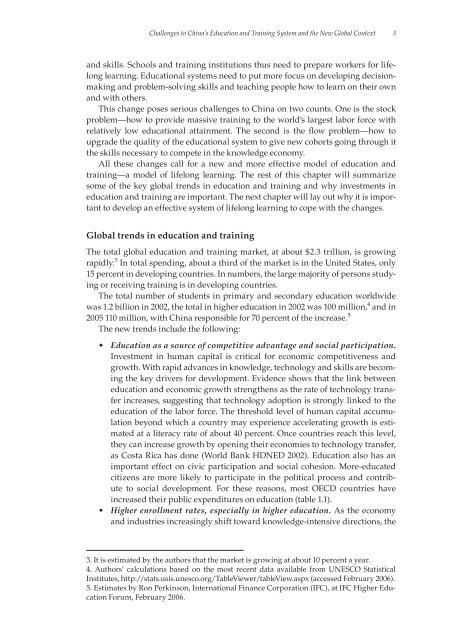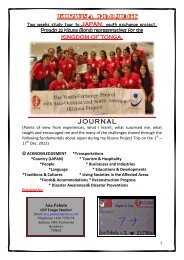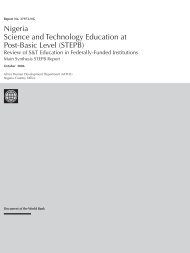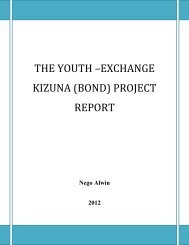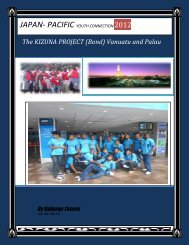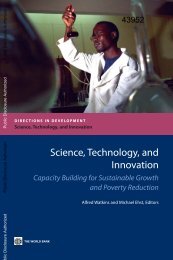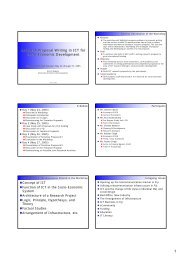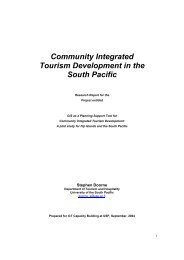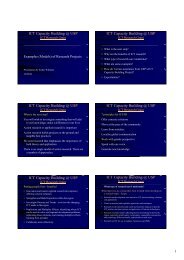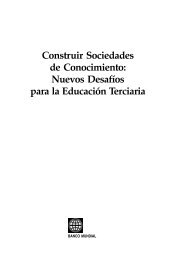Enhancing China's Competitiveness Through Lifelong Learning ...
Enhancing China's Competitiveness Through Lifelong Learning ...
Enhancing China's Competitiveness Through Lifelong Learning ...
Create successful ePaper yourself
Turn your PDF publications into a flip-book with our unique Google optimized e-Paper software.
Challenges to China’s Education and Training System and the New Global Context 3<br />
and skills. Schools and training institutions thus need to prepare workers for lifelong<br />
learning. Educational systems need to put more focus on developing decisionmaking<br />
and problem-solving skills and teaching people how to learn on their own<br />
and with others.<br />
This change poses serious challenges to China on two counts. One is the stock<br />
problem—how to provide massive training to the world’s largest labor force with<br />
relatively low educational attainment. The second is the flow problem—how to<br />
upgrade the quality of the educational system to give new cohorts going through it<br />
the skills necessary to compete in the knowledge economy.<br />
All these changes call for a new and more effective model of education and<br />
training—a model of lifelong learning. The rest of this chapter will summarize<br />
some of the key global trends in education and training and why investments in<br />
education and training are important. The next chapter will lay out why it is important<br />
to develop an effective system of lifelong learning to cope with the changes.<br />
Global trends in education and training<br />
The total global education and training market, at about $2.3 trillion, is growing<br />
rapidly. 3 In total spending, about a third of the market is in the United States, only<br />
15 percent in developing countries. In numbers, the large majority of persons studying<br />
or receiving training is in developing countries.<br />
The total number of students in primary and secondary education worldwide<br />
was 1.2 billion in 2002, the total in higher education in 2002 was 100 million, 4 and in<br />
2005 110 million, with China responsible for 70 percent of the increase. 5<br />
The new trends include the following:<br />
• Education as a source of competitive advantage and social participation.<br />
Investment in human capital is critical for economic competitiveness and<br />
growth. With rapid advances in knowledge, technology and skills are becoming<br />
the key drivers for development. Evidence shows that the link between<br />
education and economic growth strengthens as the rate of technology transfer<br />
increases, suggesting that technology adoption is strongly linked to the<br />
education of the labor force. The threshold level of human capital accumulation<br />
beyond which a country may experience accelerating growth is estimated<br />
at a literacy rate of about 40 percent. Once countries reach this level,<br />
they can increase growth by opening their economies to technology transfer,<br />
as Costa Rica has done (World Bank HDNED 2002). Education also has an<br />
important effect on civic participation and social cohesion. More-educated<br />
citizens are more likely to participate in the political process and contribute<br />
to social development. For these reasons, most OECD countries have<br />
increased their public expenditures on education (table 1.1).<br />
• Higher enrollment rates, especially in higher education. As the economy<br />
and industries increasingly shift toward knowledge-intensive directions, the<br />
3. It is estimated by the authors that the market is growing at about 10 percent a year.<br />
4. Authors’ calculations based on the most recent data available from UNESCO Statistical<br />
Institutes, http://stats.usis.unesco.org/TableViewer/tableView.aspx (accessed February 2006).<br />
5. Estimates by Ron Perkinson, International Finance Corporation (IFC), at IFC Higher Education<br />
Forum, February 2006.


